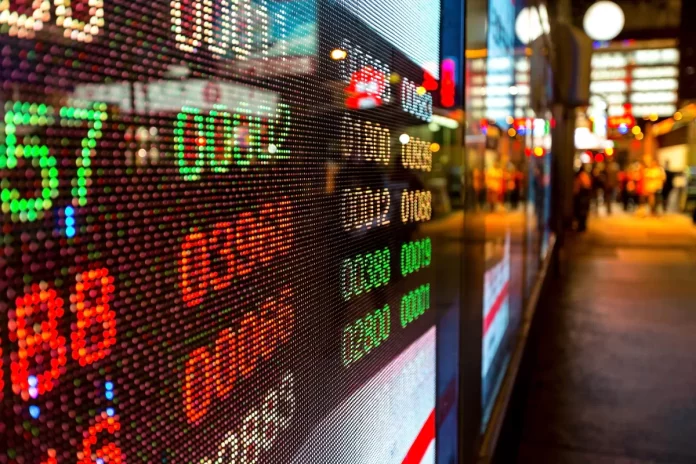All eyes on Friday – not just in Asia but around the world – will be fixed on Japan, specifically the latest inflation figures and the first of two parliamentary confirmation hearings from incoming Bank of Japan Governor Kazuo Ueda.
The importance of Japan on global market flows and pricing cannot be overstated. Japan is the world’s largest creditor nation and a chunk of the trillions of dollars Japanese investors have invested overseas could be repatriated if domestic monetary policy is tightened.
Bouts of Japanese investor repatriation flows in years gone by have had a powerful effect on the yen, dollar and euro, as well as U.S. Treasuries and other government bond prices.
Pressure is certainly mounting on the BOJ to change its ‘yield curve control’ policy of buying unlimited quantities of government debt to cap bond yields, and the cap is coming under sustained attack from markets betting on a near-term interest rate hike.
Ueda addresses the lower house of parliament on Friday and then the upper house on Monday. Assuming he is confirmed, in early April he will replace Haruhiko Kuroda, a pillar of Japan’s ultra-loose policy over the last decade.
Not only are the Fed and many other central banks raising interest rates, it finally looks like inflation has come to Japan. There can’t be too many times in the last 30 years a BOJ board member warned of the risk of an inflation overshoot, but that’s what we got on Wednesday.
Kuroda himself appeared to fan these flames, telling reporters at the G20 finance chiefs meeting in India on Thursday that the BOJ will maintain its easy monetary policy, although he expressed confidence inflation will be back below 2% in fiscal 2023 and 2024.
Economists expect figures on Friday to show that core consumer price inflation rose to a 41-year high of 4.2% in January, up from 4.0% in December and more than twice the BOJ’s 2% target.
It could be a volatile end to the week for markets, with U.S. inflation figures for January also slated for release. On top of that, a sea of red headlines from policymakers will fill traders’ terminal screens – no less than four Federal Reserve officials are scheduled to speak, and the G20 finance ministers and central bankers meeting in India cranks into gear.
Three key developments that could provide more direction to markets on Friday are G20 finance chiefs meeting (Bengaluru, India), U.S. PCE inflation (January) and Fed’s Mester, Jefferson, Collins and Waller speak.
Asian stock markets rose Thursday following Wall Street’s biggest one-day decline in two months after notes from a Federal Reserve meeting showed officials expect to keep U.S. interest rates high to fight stubborn inflation.
Shanghai, Hong Kong and Seoul advanced. Japanese markets were closed for a holiday. Oil prices gained.
Wall Street sank Wednesday after notes from the Federal Reserve’s latest board meeting showed members expect “ongoing increases” in its key lending rate to slow the economy. That dampened hopes that cuts might start as early as late this year.
“The need for ‘higher for longer’ rates was made plain,” said Vishnu Varathan of Mizuho Bank in a report.
The Shanghai Composite Index gained 0.1% to 3,294.68 and the Hang Seng in Hong Kong advanced 0.5% to 20,524.60.
The Kospi in Seoul rose 1.2% to 2,447.70 while Sydney’s S&P-ASX 200 shed 0.3% to 7,289.70.
New Zealand and Jakarta advanced while Singapore declined.
Global stock prices have been declining on worries inflation might not be cooling as quickly or smoothly as traders hoped.
Traders worry the Fed and other central banks might be willing to push the global economy into recession to extinguish inflation that has stuck near multi-decade highs despite sharp rate hikes over the past year.
Traders have begun calling off bets the Fed might cut rates late this year. They expect at least two more increases by the Fed of 0.25 percentage points. Some think the U.S. central bank might go back to using unusually large increases of double that margin.
The Fed’s key lending rate stands at 4.50% to 4.75%, up from close to zero a year ago. It has said it expects no cuts this year.
The Fed minutes showed “a few” officials preferred to raise the benchmark rate by 0.5 points at the last meeting, double the margin the bank decided on.
That followed resilient readings on hiring, retail sales and inflation that showed economic activity still is strong.
On Wall Street, the benchmark S&P 500 index lost 0.2% to 3,991.05. The S&P’s gain so far this year has narrowed to 3.9% from a peak of 8.9%.
The Dow Jones Industrial Average slid 0.3% to 33,045.09. The Nasdaq edged up 0.1% to 11,507.07.
Trades see a 3-in-4 chance the Fed will raise rates by 0.25 points at its next meeting in March, according to CME Group. They see a 27% chance of a hike of 0.50 points. – Reuters, AP









